Do you want to build muscle, or do you want to get stronger? Whatever your goal is, when it comes to achieving your fitness goals, there is one key principle that you need to be aware of: progressive overload. Whether you are a seasoned athlete or at the very start of your fitness journey, having an understanding and being able to effectively apply progressive overload to your training is key to your progression and will determine if you reach your goals or not. In this blog, we will explore what progressive overload is, why it is essential, and how you can effectively apply it to maximise your gains.

What is Progressive Overload?
Progressive overload is a training principle that involves gradually increasing the demands placed on your body over time. It is the foundation for muscle growth, strength gains, and overall fitness improvements. The principle is simple: for your body to adapt and become stronger, you must continually challenge and push it by increasing the intensity, duration, or volume of your workouts.
Intensity: The level of effort and exertion exerted during a workout or exercise session. It is a measure of how hard you are working relative to your maximum capacity.
Volume: The total amount of work performed during a workout or training session. It is a measure of the quantity of exercise performed and is typically worked out by the number of sets, repetitions, and weight lifted or the duration and distance covered in cardiovascular activities. Training volume is a key factor in determining the overall workload imposed on the body.

The Importance of Progressive Overload:
Muscle Growth: To build muscle, you need to subject your muscles to progressively higher levels of stress. By gradually increasing the weights you lift or the resistance you use, you create micro-tears in the muscle fibres, triggering the body's adaptive response to repair and rebuild stronger and denser muscle tissue.
Strength Development: Progressive overload is a key driver of strength gains. By consistently challenging your muscles with heavier loads or more challenging exercises, you stimulate the neuromuscular system to recruit more muscle fibres, enhance coordination, and improve overall strength.
Avoiding Plateaus: The human body is remarkably adaptable. Once it becomes accustomed to a particular exercise or stimulus, it will stop responding and making progress. Incorporating progressive overload into your routine ensures that you are constantly pushing past plateaus, breaking through limitations, and consistently making gains.

How to Apply Progressive Overload:
Gradual Weight Increases: When weight training, gradually increase the amount of weight you lift. Start with a weight that challenges you but allows you to maintain proper form, and as you become comfortable, gradually add more weight to the bar.
Volume and Repetitions: Another way to progressively overload is by increasing the volume of your workouts. You can add more sets or repetitions to your exercises, which increases the overall workload and stimulates muscle growth.
Intensity Techniques: Incorporate intensity techniques like drop sets, supersets, or rest-pause sets into your workouts. These techniques provide additional challenges and stimulate muscle fibres in unique ways, promoting further growth and strength gains.
How to train more efficiently with supersets:
Varied Exercises: Regularly introduce new exercises or variations to your routine, this does not mean do a different exercise every session but change variations every 3-6 months or when you feel you are beginning to stagnate in your training. By constantly challenging your muscles with different movements, angles, and ranges of motion, you ensure continuous adaptation and development.
Track and Measure Progress: Keep a workout journal or use fitness apps to track your progress. Record the weights, sets, and repetitions you perform, allowing you to objectively monitor your progress and identify when it is time to increase the intensity.
Summary
Progressive overload is the cornerstone of effective and sustainable fitness progress. By progressively increasing the demands placed on your body, you can stimulate muscle growth, enhance strength, and avoid plateaus. Remember, consistency is key, and gradual, strategic increases in intensity will yield long-term results. Embrace the principle of progressive overload, challenge your limits, and unlock your full potential in fitness.

 Jun 22, 2023 - JY Sharif
Jun 22, 2023 - JY Sharif



Leave a comment: